Hebei ZhenXing JinYuan Wire Mesh Group specializes in the production of Carbon Steel Expanded Metal Mesh, offering a range of robust and adaptable products suitable for a variety of applications. Our Carbon Steel Expanded Metal Mesh is crafted by cutting and stretching steel sheets into a mesh form, resulting in a durable and lightweight material. This mesh is ideal for use in areas such as fencing, walkways, grates, and furniture, showcasing its versatility in both industrial and architectural settings. Available in various thicknesses and sizes, our mesh can be tailored to meet the specific requirements of each project. The expanded design combines the benefits of strength and reduced weight, making it a practical choice for engineering and construction purposes. Choose Hebei ZhenXing JinYuan Wire Mesh Group for a reliable and efficient Carbon Steel Expanded Metal Mesh solution.
General Specifications
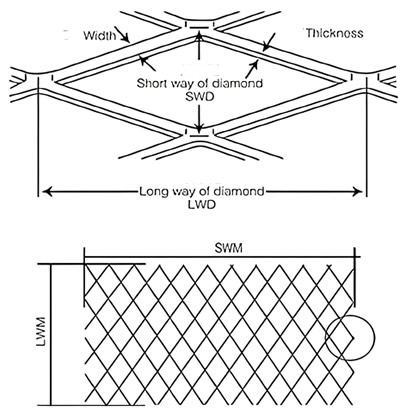
- Long Way Opening (LWO): The LWO, varying between 4mm and 100mm, refers to the measurement of the space between two parallel strands in the mesh’s longer dimension. It affects the transparency and design of the mesh.
- Short Way Opening (SWO): The SWO, ranging from 2mm to 40mm, denotes the distance between two parallel strands in the mesh’s shorter dimension. It contributes to the mesh’s overall design and functionality.
- Strand Width: Ranging from 0.5mm to 8mm, the strand width is the thickness of the individual strands in the mesh. This dimension is a key factor in the mesh’s strength and appearance.
- Thickness: The material thickness varies from 0.3mm to 12mm. It indicates the depth of the mesh material, providing options for different load-bearing requirements.
- Surface Finish: We provide multiple options for surface finishes, including anodized, powder-coated, and galvanized finishes. These finishes enhance the product’s durability and visual appeal.
- Long Way of Diamond (LWD): The LWD, ranging from 12mm to 200mm, measures the diagonal distance between the points of the diamond or rhombic shapes in the mesh. This dimension is crucial for determining the mesh’s overall appearance and strength.
- Overall Thickness: The overall thickness of the mesh, which includes the raised strands, ranges from 0.5mm to 40mm. This feature adds to the mesh’s three-dimensional effect.
- Open Area: The open area percentage, which can range from 20% to 80%, refers to the proportion of the mesh that is open space. This factor allows for varying degrees of light penetration and air flow.
- Weight: The weight, depending on the material and specifications, typically falls within 2kg/m2 to 10kg/m2. It indicates the heaviness of the mesh, making it suitable for a variety of architectural applications.
- Color: We offer a wide range of colors, depending on the chosen material and surface finish. Custom colors are available to meet specific project requirements, offering versatility in design and aesthetic options.
Expanded Metal Process
The Expanded Metal Process uniquely transforms metal sheets into versatile mesh without creating waste. This efficient procedure includes advancing, slitting, forming, and repeating, crucial for crafting the distinctive diamond-shaped patterns. The resulting mesh, strong, flexible, and aesthetically appealing, is widely used in fencing, walkways, grates, and architectural features.
- Material Selection: The process begins with selecting a metal sheet, typically steel, aluminum, stainless steel, or other metals, based on the intended use of the expanded metal.
- Advancing the Metal Plate: The metal sheet is placed in a specialized machine and advanced so it slightly protrudes beyond the bottom die’s face by one strand width, ensuring precise cutting and shaping.
- Slitting and Stretching: The machine simultaneously slits and stretches the metal sheet using a die that descends onto the sheet, creating half diamonds across the plate. This step forms the foundational pattern of the expanded metal.
- Forming the Mesh: As the die cuts and stretches the metal, it creates interconnected strands and bonds, forming a lightweight yet strong mesh. The top die then ascends and shifts sideways to align the next row of cuts.
- Repeating the Process: The machine continues advancing, slitting, and stretching the metal sheet, creating a uniform diamond pattern. This repetition continues until the entire sheet is transformed into expanded metal mesh.
- Finalizing the Product: After processing, the sheet may undergo additional steps like flattening, cutting, or finishing (e.g., painting or galvanizing) depending on the application.
This meticulous process transforms a simple metal plate into a structurally sound and aesthetically pleasing mesh, suitable for various applications in industrial and architectural fields.
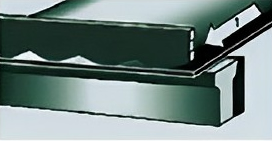
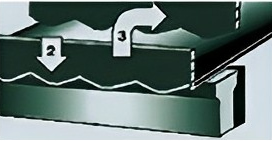
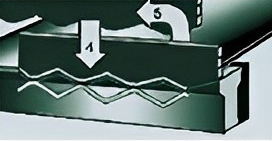
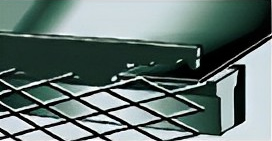
1, The metal plate is advanced beyond the face of the bottom die by one strand width.
2, The top die descends, slits, and forms an entire row of half diamonds.
3, The top die then ascends and moves half a diamond to the right as the base sheet of the plate moves forward one strand width.
4, The top die descends again, slitting and forming another full row of half diamonds to complete a row of full diamonds.
5, The die ascends, and the above steps are repeated continuously.
International standards
International standards for Expanded Metal production differ by region and application, ensuring product safety, reliability, and quality. Hebei ZhenXing JinYuan Wire Mesh Group, a manufacturer of expanded metal products, adheres to these standards for global market compliance, with several key standards being widely recognized.
- ASTM Standards (American Society for Testing and Materials): ASTM provides a wide range of standards that can be applicable to expanded metal, including those for materials, dimensional tolerances, structural performance, and finishes. For example, ASTM F1267 covers the material, mechanical, and metallurgical requirements for steel expanded metal for use in fences, walkways, and other applications.
- BS EN Standards (British Standards European Norm): In Europe, the BS EN standards are widely followed. These standards include specifications for dimensions, raw material quality, strength, and safety aspects of metal products, including expanded metal.
- DIN Standards (Deutsches Institut für Normung / German Institute for Standardization): DIN standards are German national standards that are also recognized internationally. They include specifications for manufacturing processes, quality, and testing procedures for expanded metal products.
- JIS Standards (Japanese Industrial Standards): JIS standards are used in Japan and widely respected in Asia. They cover a variety of industrial product standards, including those related to metal processing and products.
See pictures for examples
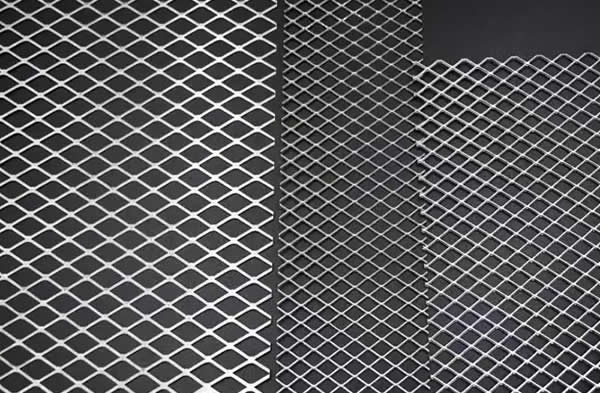
Expanded Metal: Cut and Stretched Steel Mesh for Versatile Use from Fences to Furniture
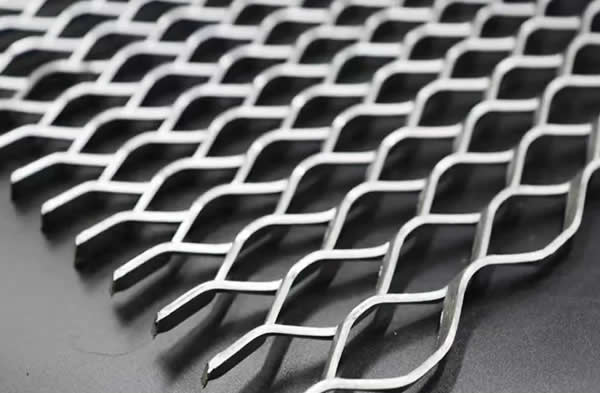
Heavy Duty Expanded Metal: Strong, Permeable, and Versatile for Industrial and Construction Use
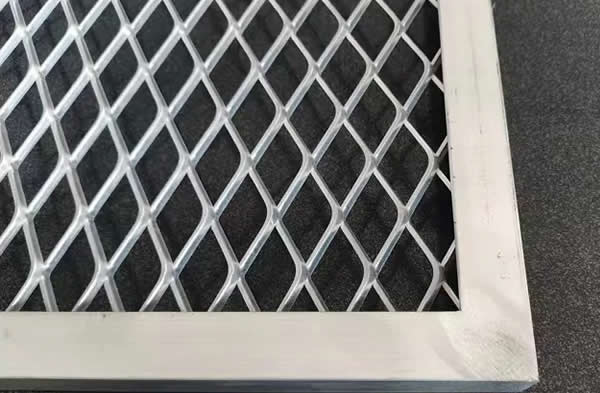
Expanded Metal Sheet: Versatile Steel Mesh for Fences to Furniture Applications
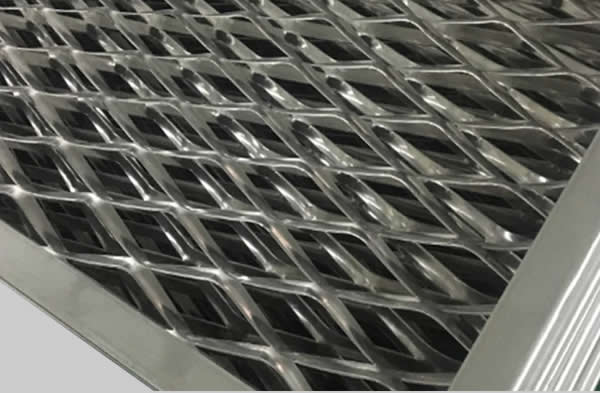
Expanded Metal: Ideal for Filtration, Screen Doors, and Window Guards
Surface Treatment
Surface treatment is essential for enhancing the durability, appearance, and corrosion resistance of carbon steel expanded metal mesh. The choice of treatment hinges on its intended use, environmental exposure, aesthetic preferences, and budget. Galvanizing and powder coating stand out for their durability, making them ideal for outdoor or extreme conditions. Common methods include:
- Galvanizing: One of the most common treatments for carbon steel mesh is galvanizing, particularly hot-dip galvanizing. This process involves immersing the mesh in a bath of molten zinc. The zinc forms a protective barrier that prevents rust and corrosion. It’s especially useful for outdoor applications where the mesh is exposed to the elements.
- Powder Coating: Powder coating applies a protective and decorative finish to the mesh. The powder (a mixture of finely ground particles of pigment and resin) is electrostatically sprayed onto the surface. Then, it’s cured under heat to form a hard coating. Powder coating is available in a variety of colors and provides a smooth, uniform appearance while also offering protection against corrosion and weathering.
- Painting: Although less durable than galvanizing or powder coating, painting is another way to protect carbon steel mesh. It provides a barrier against moisture and can be used to improve the appearance of the mesh. Specialized rust-inhibiting paints are often used to enhance corrosion resistance.
- PVC Coating: PVC or plastic coating is another method, where a layer of polyvinyl chloride (PVC) is applied to the mesh. This coating improves the mesh’s resistance to environmental factors and chemicals and can also add color for aesthetic purposes.

